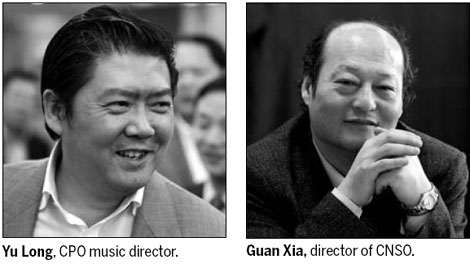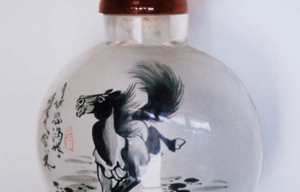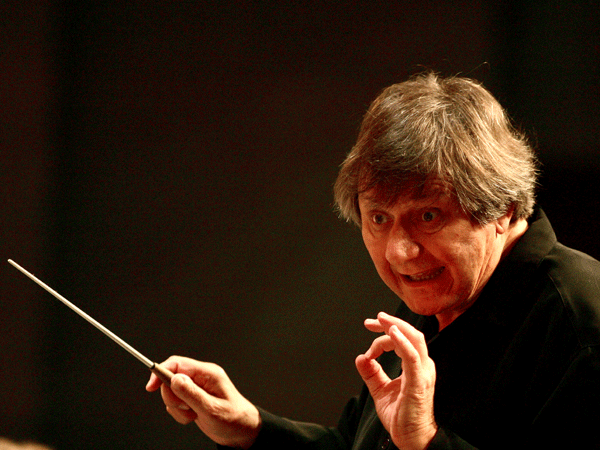Art
Symphonies in season
Updated: 2011-09-23 07:49
By Mu Qian (China Daily)
|
French conductor Michel Plasson will lead the CNSO. [Photos by Jiang Dong / China Daily] |
China National Symphony Orchestra and China Philharmonic Orchestra will present more Chinese works, as the 2011-12 season gets underway, amid the growing popularity of symphonic music. Mu Qian reports.
September is a busy time for both fans of classical music in Beijing and the two national symphony orchestras based in the city - China National Symphony Orchestra (CNSO) and China Philharmonic Orchestra (CPO). Both orchestras began their new seasons earlier this month, announcing tight concert schedules. CNSO toured Russia and performed on Sept 6 and 7 at the International Eurasian Arts Festival in Yekaterinburg.
On Sept 24, the orchestra will premiere The Road to the Republic, a symphonic poem composed by contemporary composer Ye Xiaogang and dedicated to the 100th anniversary of the 1911 revolution.
"While playing classic Western symphonic music works as usual, we will also pay more attention to Chinese works during this season," says Guan Xia, director of CNSO.
Besides Guan's own Requiem for the Earth (a work dedicated to the Wenchuan Earthquake in 2008) that was performed at the new season's opening concert on Sept 1 and Piano Concerto No 1 "The Founder" which was performed on Sept 4, many other Chinese works are also on the program.
The orchestra will hold two concerts of new Chinese works on Nov 19 and Dec 15 respectively, with the programs including Tang-Tibet Ancient Road by contemporary Chinese composers Zhang Xiaofeng and Liu Kuanren.
Like its peer, CPO also has a number of important Chinese works on its program for the 2011-12 season, including Ye's The Song of the Earth, Chen Peixun's Ode to the Snow, and 25-year-old Wang Nanfei's Red Cheongsam at Midnight, which will see its China premiere on May 19, 2012.
"Symphonic music is becoming more popular with both orchestras and audiences, and fans should be able to hear not only the classics but also new works. I hope China Philharmonic Orchestra will contribute more new works for audiences," says Yu Long, the orchestra's music director.
For the 2011-12 season, the orchestra will also premiere some classical works, such as Mahler's Ruckert-Lieder and Peter Ruzicka's Uber Unstern, as well as some Western works that have rarely been performed in China, such as Bruckner's Symphonies No 8 and 9. This season of CPO will comprise 31 concerts, four more than the previous one.
"We have a busy schedule this season, and we hope it will be one full of surprise and excitement," Yu says.
Both the orchestras will cooperate with a number of international conductors in the new season. CNSO will perform under the batons of Michel Plasson, Penderecki and Yeol Levi, while CPO will play with Jacek Kaspszyk, Charles Dutoit and Christoph Eschenbach, among others.
Among the soloists who will make an appearance in the new season are violinist Agata Szymczewska, soprano Zhang Liping, bass-baritone singer Shen Yang, pianist Rudolf Buchbinder and viola player Shlomo Mintz.
In October, CNSO and CPO will be joined by three other Chinese orchestras, and will perform all the symphony works of Mahler at the 2011 Beijing Music Festival, which is dedicated to the 100th anniversary of the death of the renowned Austrian composer.
On Oct 6, the festival will open with Dutoit conducting CPO, CNSO Chorus and a number of other choirs to perform Mahler's Symphony No 8 in E Flat Major, which is nicknamed "symphony of a thousand" because of the many performers it requires.
Both orchestras will also hold educational concerts in the new season, including concerts in universities and colleges. To make it easier for audiences to understand symphony music, CPO's educational program will include guidance from experts on each concert' program.
CPO also launched its micro blog two months ago and already has more than 120,000 followers.
Although symphony music first appeared in the late 19th century in China, the professionalization of Chinese symphony orchestras began only in 1996, when the Central Philharmonic Orchestra of China was transformed into CNSO.
Likewise, CPO evolved from the former China Broadcasting Symphony Orchestra, in 2000.
"We are still a young orchestra and just celebrated our 10th birthday last year. This is a new start for us," Yu says. "We are looking forward to a fruitful new decade of development of China Philharmonic Orchestra as well as Chinese symphonic music."

E-paper

The snuff of dreams
Chinese collectors have discovered the value of beautiful bottles
Perils in relying on building boom
Fast forward to digital age
Bonds that tie China. UK
Specials

Let them eat cake
Cambridge University graduate develops thriving business selling cupcakes

A case is laid to rest
In 1937, a young woman'S body was found in beijing. paul french went searching for her killer

Banking on change
Leading economist says china must transform its growth model soon

